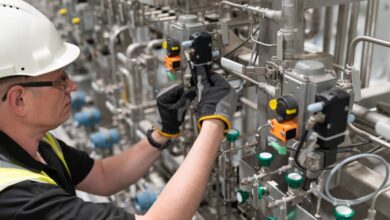Automation in Construction Industry

Automation in production and manufacturing has had a massive impact on the construction industry. Work orders, inventories, scheduling, budgeting, cost control, and safety compliance are areas where automation can help increase manufacturing speed and quality. It’s a positive sign for the industry as a whole, especially given the global demand for better infrastructure and housing. Anticipating and preparing for the change and developing new skills in the current and future workforce will be critical. This article will look at what automation means in the construction industry and how it might affect its future.
Benefits of Building an Autonomous Process for Your Company
There are numerous advantages to developing an autonomous process for your construction company. Here are a few examples:
1) A boost in productivity
While innovation in boosting productivity in other industries is broadly accepted, the construction sector has stagnated, with annual growth averaging less than 1% in the last twenty years. In the construction industry, there are three main prospects for automation. The first is on-site automation of what might be considered classic physical operations, like bricklaying robots and road paving equipment. The second opportunity stems from automation systems of modular construction—or production, which includes 3-D printing of components like facades. The third focuses on digitalization and the resulting automation of designing, planning, and management operations and the enormous efficiencies that may be achieved on-site as a result. For example, building information modeling makes the planning process much more efficient by bringing together the concepts of planners and construction firms to discover difficulties before they go to the site. But, more crucially, it improves the efficiency of on-site execution, allowing development teams to eliminate errors and better manage their personnel.
2) Cost savings
Automation is often seen as the answer to the majority of the existing issues. Many parameters have attested to its benefits too – higher production rates, superior product quality, etc. Higher output and productivity have also been two of the most compelling arguments for using automation. One of its most prominent advantages is the consistency it provides. Robots are inflexible in their work, so when it comes to quality control, there is no possibility that they have not followed the same protocols throughout the entire task.
3) Higher worker safety and less chance of human error
One of the most important duties of a construction manager is to ensure a safe working environment. In this case, using construction equipment maintenance software will most certainly decrease the chance of serious errors and possible injuries. Aside from the safety concerns, substantial expenses are related to an unsafe work environment. Robots are being considered as a way to improve safety with some of the more hazardous jobs, such as demolition.
Challenges of implementing automation in construction
There are numerous obstacles to overcome when automating your construction processes. The first issue is that not every construction site is appropriate for automation. Extreme conditions at some sites make it more difficult to automate processes without endangering workers. The second issue is that some construction processes are more demanding for automation than others. One process, for example, may be too repetitive or dangerous to automate. In contrast, the other has a high level of complexity, finding it challenging for the human workforce to accomplish independently.
AI can be seen as an enemy of the workforce, and there are many concerns about how it will affect their jobs. According to recent research, construction workers and industry leaders are worried about the risk of automation on employee happiness, workforce displacement, and workplace mental stress. Apart from the possibility of being displaced from the workplace, they may also be displaced geographically. Geographical relocation can cause anxiety because the readiness and flexibility of every individual to adapt to the new environment can vary drastically. Although the concerns raised are valid, the impact of automation on the construction industry is significantly more favorable.
How You Can Move Forward With Automation In Your Company
Before expanding out into other areas, some businesses may want to begin by automating only one task or process. Others may find it more productive to automate the entire process from the start. Striking a balance for your company and incorporating it at a pace that is comfortable for both you and your employees is the key. It’s important to keep in mind that there are numerous types of automation, each with its own set of benefits and drawbacks. Consider which method will perform effectively for your organizational requirements as you analyze your options.




